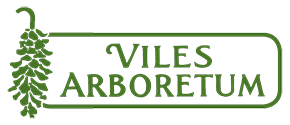We are excited to announce our new Seasonal Photography Contest! This contest is designed to get our community out to enjoy the Arboretum in all of its seasonal glory. Every three months we will offer a new opportunity to enter and win.
Interested in learning to snowshoe or ski but don't want to commit to purchasing your own gear? Viles Arboretum in Augusta offers ski and snowshoe rentals Wednesday through Saturday from 10:30 to 4:30. Our friendly staff will help you find the right size equipment and offer you information on trail conditions before you head out. We offer approximately 1.5 miles of groomed ski trails, and over 6 miles of snowshoe trails.
Viles Arboretum is a free and easily accessible botanical garden in Augusta. The 224-acre space includes six miles of trails, dozens of plant collections and a sculpture exhibit. The Arboretum’s preserved land, interpretive materials, exhibits, programs and events, and trail system are designed for people of all ages for education, recreation, and inspiration.
On August we wrapped up the first summer camp program hosted by Viles Arboretum in many years, the Young Stewards Summer Camp Program. 19 children between the ages of 7 and 10 attended the camp, each a budding outdoor enthusiast. The faces of this group represent the future of conservation and environmental stewardship in our community.
If you have spent anytime outdoors in the Central Maine area in the past three months you have likely become well acquainted with the brown-tail moth. Since late April they have covered almost every outdoor surface, leaving Mainers suffering from terrible rash.
Every year, aromatic purple, pink and white flowers adorn yards all across the United States. The lilac has been wildly popular ever since its introduction to North America in the 17th century. These resilient shrubs often out-live the residences and homesteads where they were originally planted. If you take a walk in any forested area in New England, you may spot an old lilac shrub marking old home sites long before you locate a foundation.
We are excited to offer our Young Stewards Summer Camp Program here at Viles Arboretum this summer!
This fantastic opportunity for children ages 7-11 will give children the opportunity to become scientists for the week. Children will collect samples, use tools like microscopes, learn real-life survey techniques and more. Coupled with summer camp classics like group games, arts and crafts, and time to just explore the woods, this week is a celebration of the great outdoors.
The Larch Collection, also known as Alfred's Half Acre, was established as a memorial planting in 1991 by Elise Viles. Larch trees are unique as they are classified as deciduous conifers, meaning they have needles that drop every fall.











